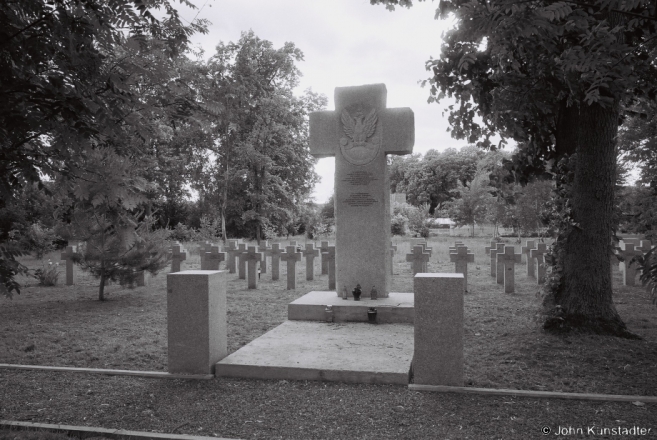For centuries a German-Russian vise has remorselessly tried to squeeze the life from the history of the nations and lands in between. It is thus an existential matter for those nations to resurrect their own histories and the common history of their lands.
Under the 1921 Polish-Soviet Treaty of Riga, the Soviets held on to the eastern two-thirds of the Belarusian lands, which the Bolsheviks had seized in 1919. The western third of Belarusian lands was incorporated into the Second Polish Republic. On September 1, 1939 Nazi Germany invaded Poland from the west. On September 17, under the secret annex to the Soviet-Nazi Molotov-Ribbentrop Pact, and claiming to be liberating western Belarus, the Soviet Union invaded Poland from the east. Soviet and Nazi German forces held a joint victory parade in Bjares’tsje (Brest) in western Belarus once they had defeated Poland.
The Soviet regime occupied, annexed, and ruthlessly Sovietized western Belarus (and western Ukraine, and in 1940 Lithuania, Latvia, Estonia and Bessarabia) before the June 22, 1941 German invasion and savage occupation of Soviet-ruled lands. The Soviets re-imposed their rule on Belarus after pushing the Germans out in 1943-1944 on the way to Berlin. Today, reflecting a Soviet version of history long discredited elsewhere, many streets in western Belarus still bear the Soviet-era name “17th of September”.
In occupying western Belarusian lands, the Soviets deported hundreds of thousands of people to Siberia and Kazakhstan and imprisoned and murdered thousands of soldiers in the Polish Army, border guards and civilians. Kobryn was no exception. The Soviet secret police (NKVD) imprisoned and murdered scores of Poles in Kobryn in the days after September 17 and dumped their bodies in an unmarked mass grave.
Several years ago, under the influence of a quiet but persistent civic campaign, the Belarusian authorities permitted Polish forensic experts to join in an exhumation and honorable reburial of Poles in Kobryn who fell in the defense of their country or whom the Soviets murdered after September 17. A memorial was dedicated opposite the Roman Catholic church of the Assumption and next to a restored cemetery and memorial to Poles who fell resisting the Bolsheviks in 1920.
The memorial cross bears this inscription in Polish and Belarusian:
Here rest soldiers of the Polish Army, police officers and civilians who fell or were murdered in September 1939. Honor to their memory.

Добры дзень, Джон!
Вялiкi дзякуй Вам за Вашы фотаздымкi! Яны столь жа прыгожыя, як i простыя. I гэта, зразумела, не прынiжэнне. Наадварот.
Я жадаю Вам i далей мець магчымась ездiць па Беларусi, здымаць яе краявiды i людзей. А я буду з найвялiкай цiкавасцю сачыць за Вашай творчасю i з нецярпеннем чакаць новых фотаздымкау.
Яшчэ раз шчыры Вам дзякуй!
З павагай,
Андрэй
Спадар Анлрэй, вялікі дзякуй за Вашу зацікаўленьнасьць, шчырую ацэнку й падтрымку, якія натхняюць мяне далей.
З павагай і найлепшымі пажаданьнямі,
Джон К.